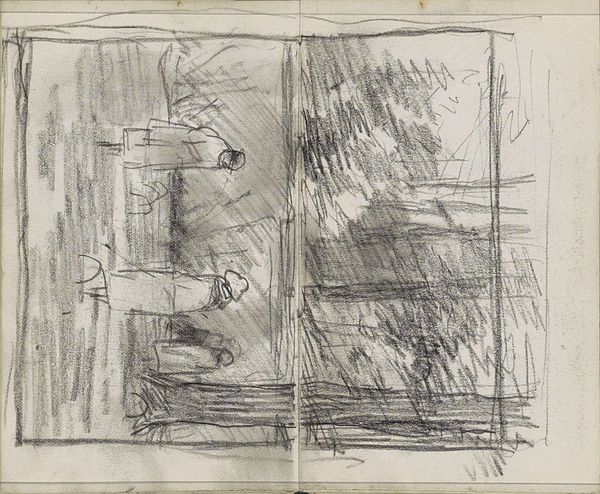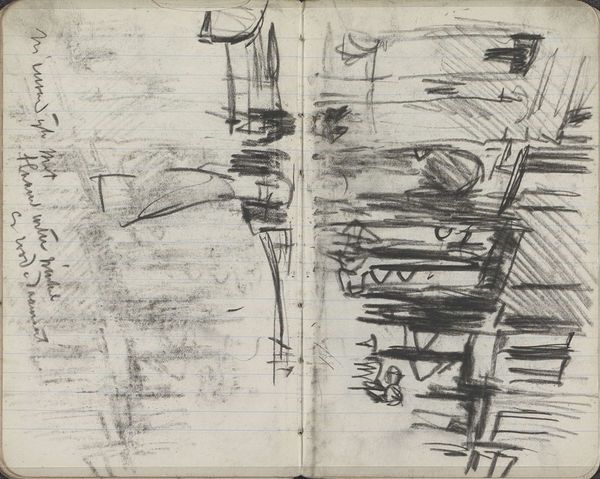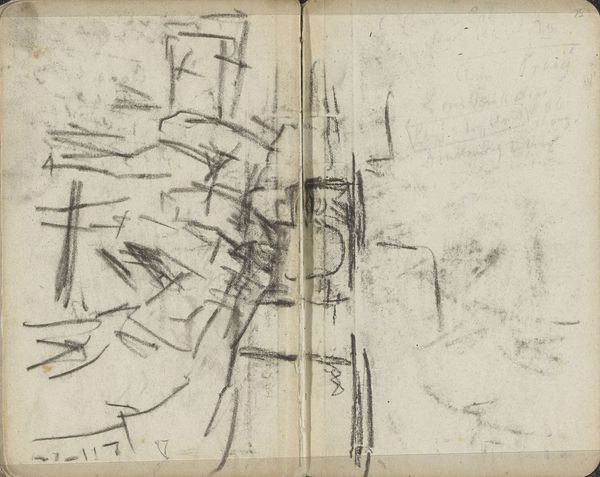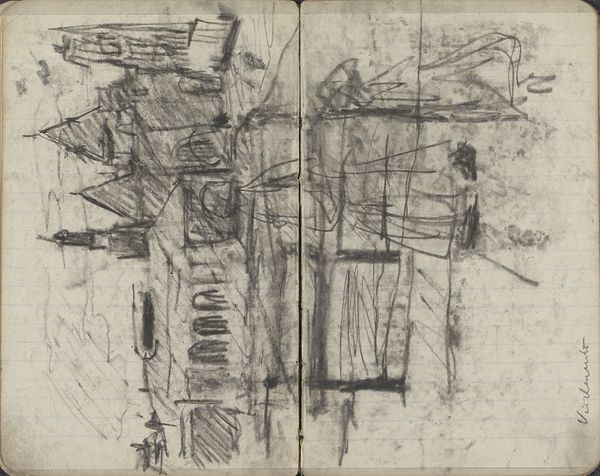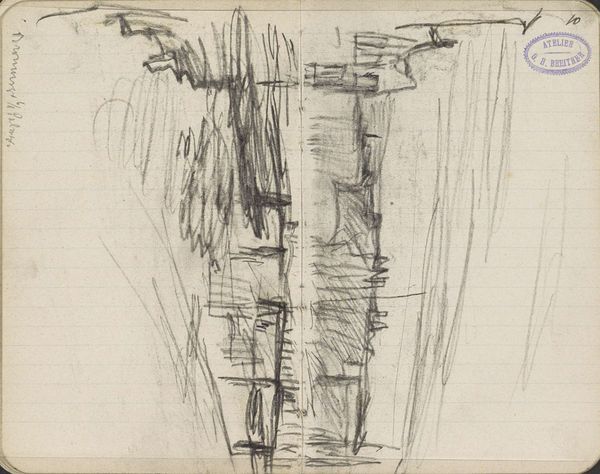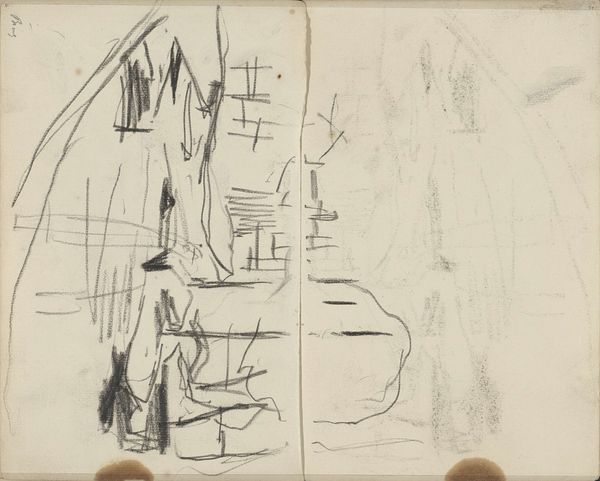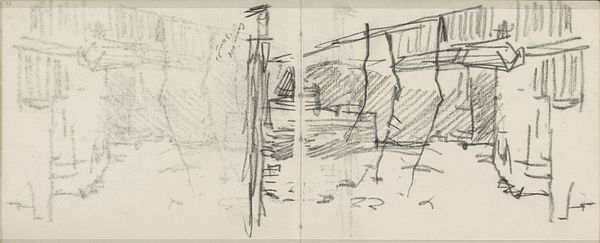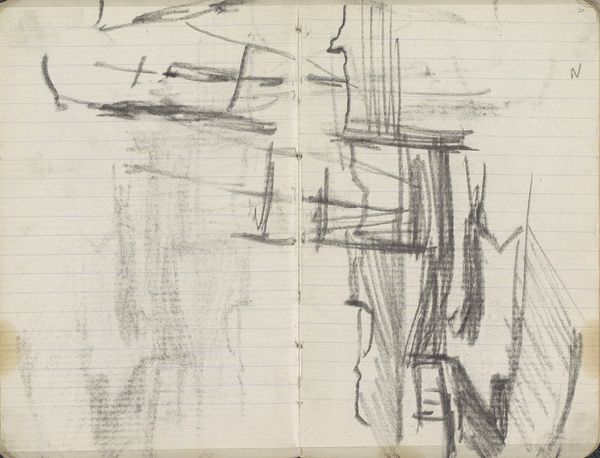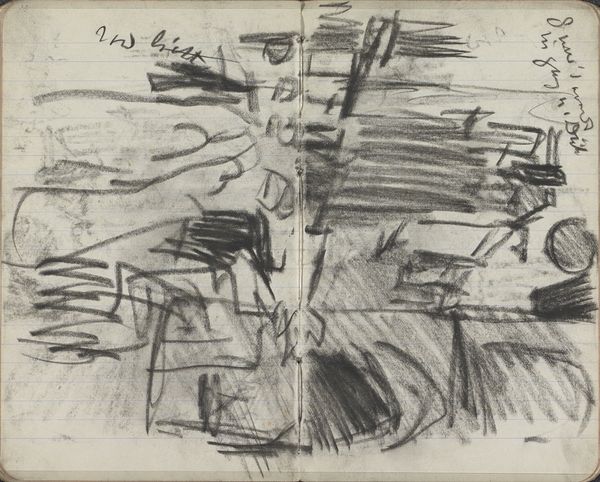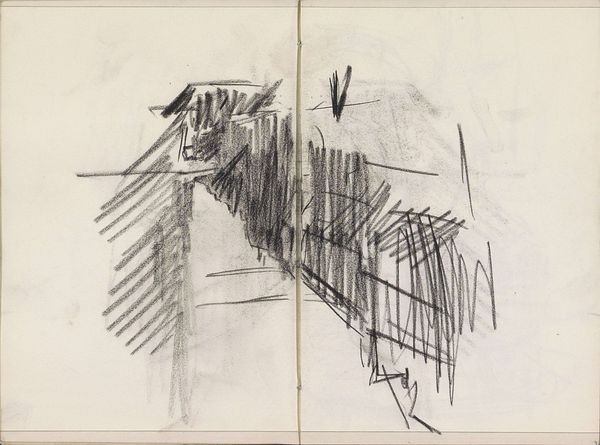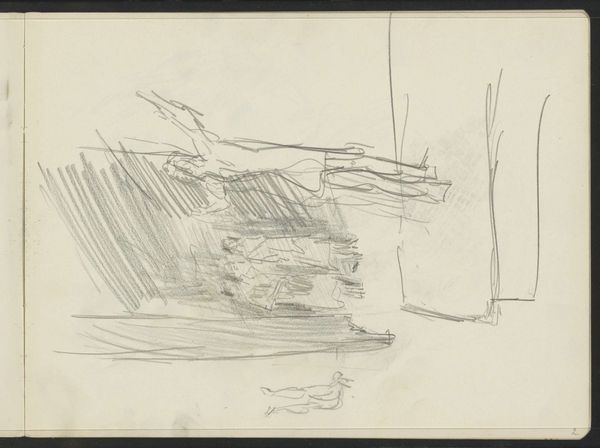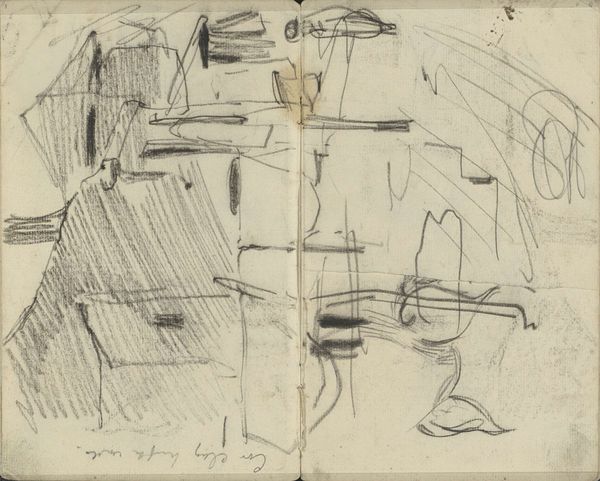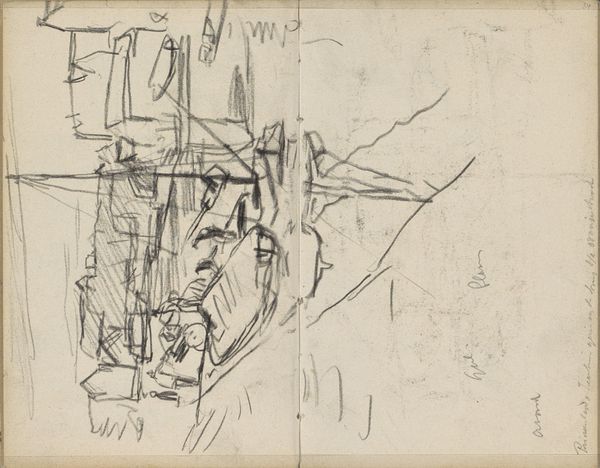
drawing, graphite
#
drawing
#
impressionism
#
landscape
#
abstraction
#
graphite
#
northern-renaissance
#
realism
Copyright: Rijks Museum: Open Domain
Editor: This is "Landschap met bomen," or "Landscape with Trees," a graphite drawing by Anton Mauve, created sometime between 1848 and 1888. It’s quite abstract; at first glance, it almost looks like a collection of scribbles. How do you interpret this work? Curator: The perceived abstraction might be Mauve's way of challenging the dominant landscape traditions of his time. Remember, the mid-19th century was a period of significant social upheaval, and artists were grappling with new ways to represent the world, rejecting idealised views. Is it truly landscape? What might it say about the increasing disconnect between people and nature? Editor: That's a very interesting way to frame it. So, instead of trying to capture a picturesque scene, he's maybe commenting on the human impact on the natural world, or even an alienation from it? Curator: Exactly! And consider the choice of graphite. It’s raw, immediate. Not like an oil painting, but more akin to a field sketch, recording a fleeting, personal encounter. How can we reconcile this more ephemeral vision to grand statements of earlier landscape painters? Editor: I see what you mean. The sketch-like quality does suggest immediacy, but also impermanence. Were there specific political events in the Netherlands during Mauve's life that may be associated with those feelings? Curator: Absolutely! Consider the socio-economic conditions of the rural population at that time, issues surrounding land ownership and displacement, particularly the waves of migrations after the great famines that impacted The Netherlands heavily. The artwork might then function as social commentary. This is more than just a pretty picture! What do you take from our discussion? Editor: This definitely sheds light on this drawing beyond just technique and impression. Seeing art through a lens of social commentary, adding in the political environment helps in better understanding what the artist was communicating. Curator: Indeed. And that is one way we can view this. Art always remains a matter of interpretation, especially from a historical perspective.
Comments
No comments
Be the first to comment and join the conversation on the ultimate creative platform.
